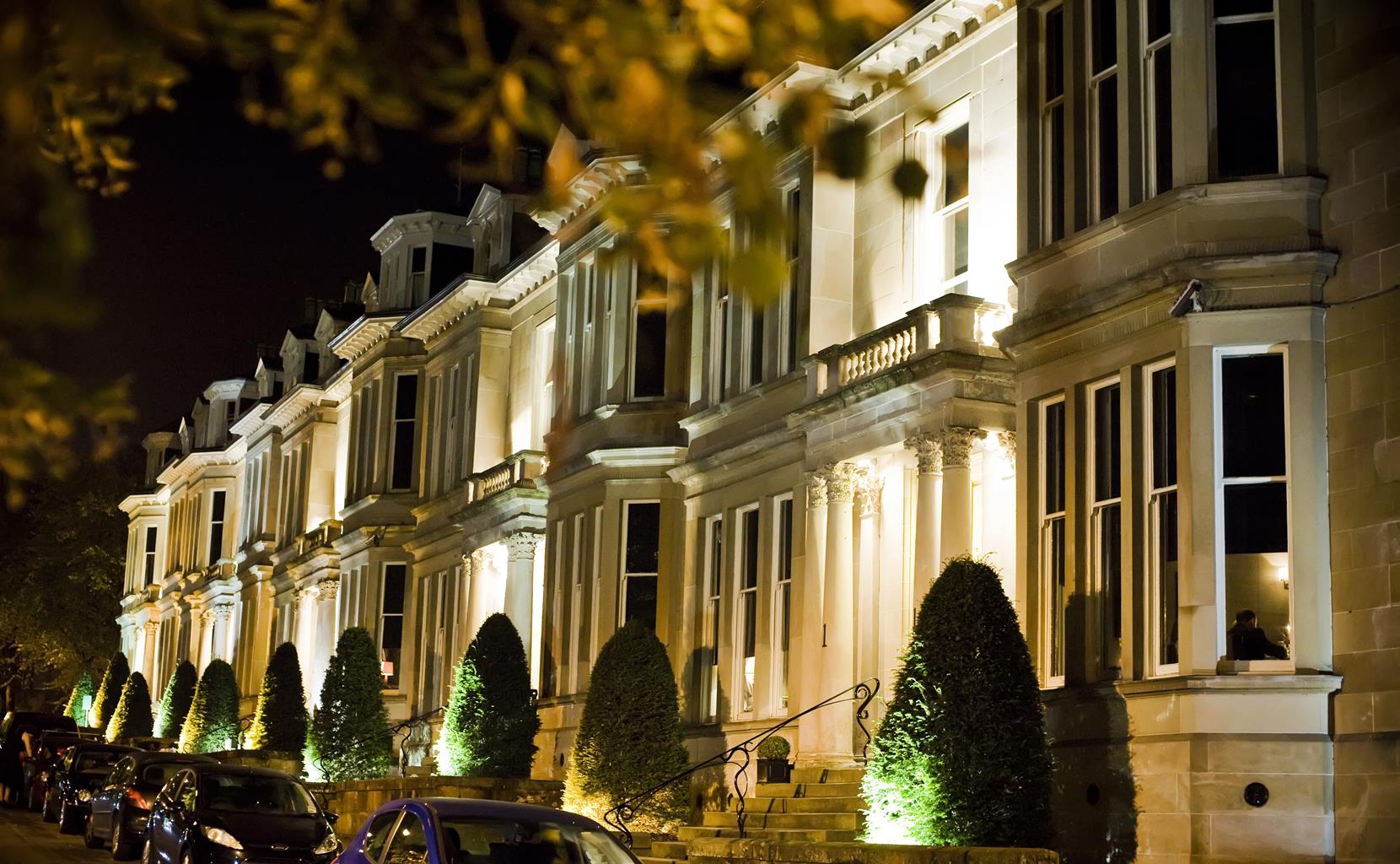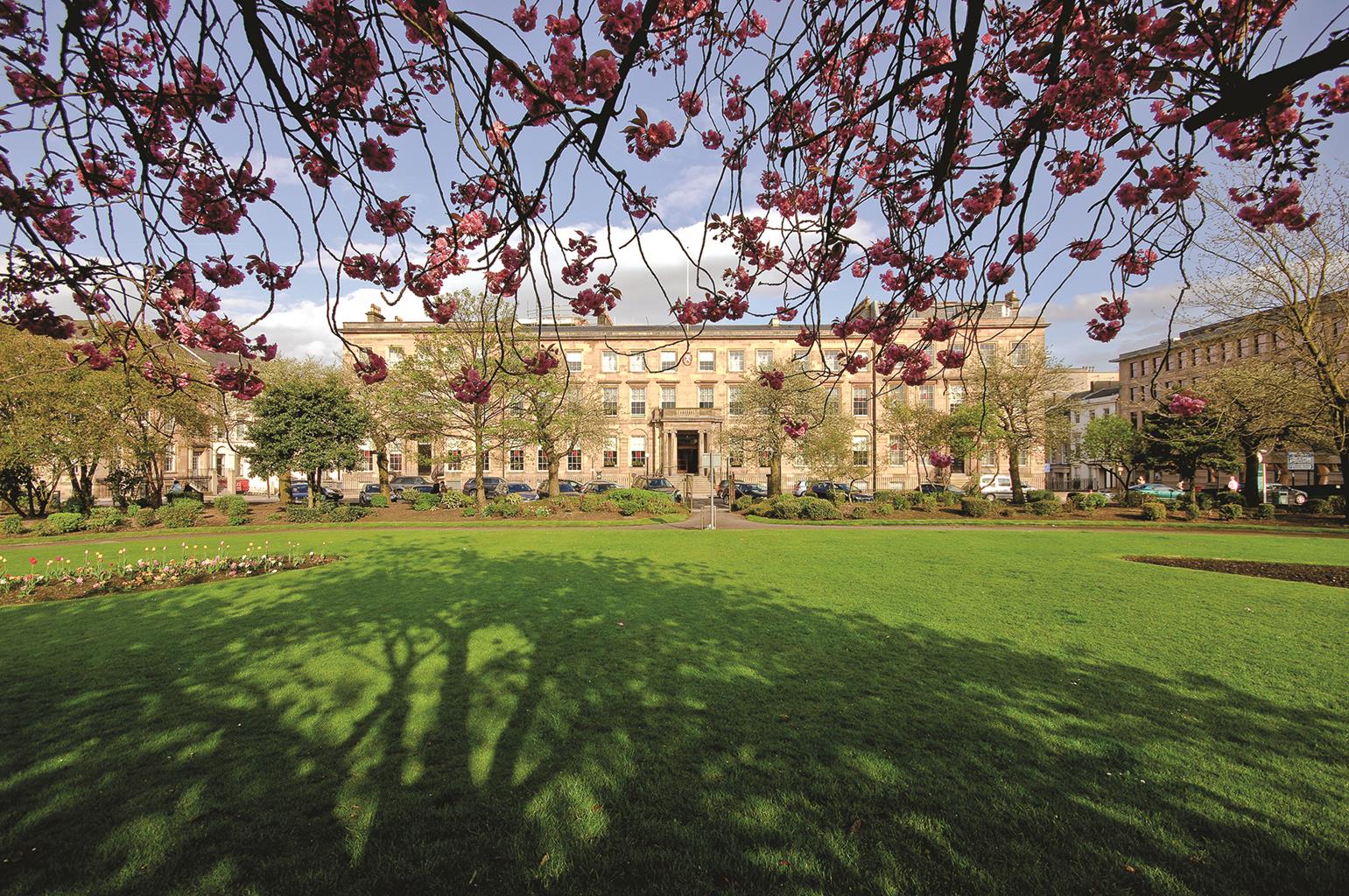Georgian House offers good-value accommodation and is situated at the west end of the city in a…
Glasgow's Riverside Museum

Glasgow’s new transport museum and the last of the Clyde-built sailing ships
4 miles (6.4kms)
About the walk
When she was towed up the Clyde in 1993, the Glenlee was a sorry-looking sight. Little more than a derelict hulk, she had been saved from destruction by a group of forward-thinking enthusiasts. Today, restored to her former glory, she is an important part of the regeneration of Glasgow's harbour area.
From Cargo Vessel to Training Ship
Built in 1896 by Anderson Rodger & Co of Port Glasgow, the three-masted steel barque was one of the last sailing vessels launched on the Clyde. She had a long career as a cargo vessel, circumnavigating the globe four times and sailing over a million nautical miles under a British flag. Towards the end of her cargo career, engines were fitted to help keep her on schedule. Three times she ran aground and once almost caught fire, but on each occasion she was rescued. Then in 1921 she became a sail training ship for the Spanish Navy and remained in use until 1981. She sank at Seville, when her sea cocks were stolen to sell as scrap. With her engines drowned and rusted solid it looked like the end.
Lovingly Restored
The Clyde Maritime Trust received a letter from the Spanish Navy giving the ship's details and history and asking if the Trust would like to collect the Glenlee and save her from being broken up. The Trust had very little money but managed to raise enough to purchase her, raise her and have her towed back to Scotland. After a short spell in dry dock at Greenock, where an inspection revealed the hull to be sound, she was towed up the Clyde to Yorkhill Quay.
For the next six years volunteers and enthusiasts took on the seemingly impossible task of turning the Glenlee back into a sailing ship. The interior cargo holds and accommodation were lovingly re-created. Decking was fitted and Jamie White, a rigging expert from the National Maritime Museum in San Francisco, was called in to restore and reinstall the original rigging. White already looked after the rigging on the Balclutha, another Clyde-built sailing ship, so he knew what he was doing. When work was nearly completed in 1999, the Glenlee was towed back down the Clyde to Greenock for the final paint job, known as Gunport, when dark patches were painted on the side to look like gun ports. In days gone by this deception was thought to increase the safety of cargo ships. Old photographs of the Glenlee show that she was painted in Gunport at one time. The Glenlee went on public display at Yorkhill Quay in 1999. In 1911, following a re-fit at Greenock, she moved to her new permanent location at Pointhouse Quay, alongside Glasgow’s Riverside Museum.
Walk directions
From the car park at the Riverside Museum take the path leading uphill to the left, towards the main road. At the junction go left, following signposts for Kelvingrove Gallery and Museum. Go under the road then turn right. Keep ahead at the next junction then at the one after turn left under a railway bridge following signs for Kelvingrove Park and River Kelvin Way, then turn right into Kelvinhaugh Street.
Turn left into Yorkhill Street and right into Haugh Road. Keep ahead, crossing Argyll Street then Sauchiehall Street to arrive in Kelvin Way. On your left is Kelvingrove Art Gallery and Museum, which is Scotland’s top free-to-enter tourist attraction and the most visited museum in the UK outside of London.
Turn right on to the Kelvin Walkway, right again over the second bridge, then turn left at the Memorial to the Highland Light Infantry. Fork left and follow the riverbank.
This eventually goes uphill. Just before you reach the top of the hill look out for a narrow path on the left. Go left here and under a bridge. Turn left at a cycle path sign to Woodside and Milngavie, go over a bridge and past a café/bar then continue walking along the walkway.
Cross another bridge, go left at a junction, still following the river. Go under a bridge and then go left across a humpback bridge leading to the Botanic Gardens. Head up the steps to reach the gardens. Turn right alongside the Kibble Palace, turn left and follow this drive to the gates and then exit the gardens.
Cross Great Western Road at the traffic lights and walk to the end of Byres Road. Cross Dumbarton Road then turn left into Partickbridge Street, right into Castle Street, left at a T junction, then right into Ferry Road. Follow this under a railway bridge then turn right onto a footpath and continue on this as it curves left and under the main road to return to the Riverside Museum.
Additional information
Pavements and footpaths
Riverside, city blocks, park, botanic gardens
Locals walk dogs on part of route, on lead on busy streets
OS Explorer 342 Glasgow; AA Street by Street Glasgow
Car park at Riverside Museum (small fee)
In Riverside Museum (free admission)
WALKING IN SAFETY
Read our tips to look after yourself and the environment when following this walk.
Find out more
Also in the area
About the area
Discover Glasgow
Scotland’s biggest city is also arguably its youngest. Glasgow may have been founded some 1,500 years ago, but most of what you see today is much more recent. The nightlife is legendary, ranging from a lively clubbing scene to Scottish traditional music in lively bars and pubs. The city claims to be Scotland’s sporting capital, a claim which was reinforced when it was chosen to host the 2014 Commonwealth Games. Football is as much a local obsession as anywhere in Scotland, with all clubs maintaining a keen rivalry.
Glasgow can claim to be one of Scotland’s most ethnically diverse cities, and it has been since the 19th century. Glasgow’s industrial boom created huge demand for labour at a time when both the Scottish Highlands and Ireland were suffering extreme poverty and even famine, so tens of thousands of people migrated to work in Glasgow’s mills and shipyards. The city also had a sizeable Jewish community, and in the late 19th century, large numbers of Italians migrated to the city. About a century later, Glasgow attracted migrants from India, Pakistan and Bangladesh, and as a result you’ll find some of the best Asian food in Scotland here.
Nearby stays
Restaurants and Pubs
Nearby experiences
Recommended things to do
Why choose Rated Trips?
Your trusted guide to rated places across the UK
The best coverage
Discover more than 15,000 professionally rated places to stay, eat and visit from across the UK and Ireland.
Quality assured
Choose a place to stay safe in the knowledge that it has been expertly assessed by trained assessors.
Plan your next trip
Search by location or the type of place you're visiting to find your next ideal holiday experience.
Travel inspiration
Read our articles, city guides and recommended things to do for inspiration. We're here to help you explore the UK.













